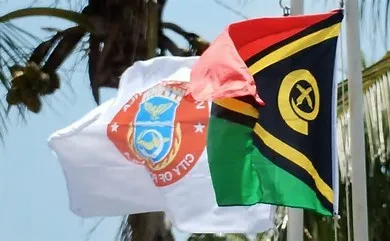When a daughter of Haryana, Padmashree Santosh Yadav, became the first woman chief guest in the annual program of the Rashtriya Swayamsevak Sangh on Vijayadashami, discussions started about the beginning of a new era. On 4 October, when Santosh Yadav was leaving for Nagpur, over 150 khap panchayats were united in Jind, considered the heart of Haryana, to demand amendments to the Hindu Marriage Act. Padmashree Santosh Yadav is a world record mountain climber as well as an icon for women and sportspersons. At the same time, the Khap Panchayats of the state are the mirror of the social fabric and concerns of the state. Haryana, which is in the limelight due to sportspersons and panchayats, cannot be satisfied with so many introductions. Its overall introduction cannot be complete without telling the story of its ancient history, its cultural concerns and the high leap of development.
The story of the early development of human civilization was written on the soil of Haryana itself. The Saraswati-Indus civilization developed on the banks of the Saraswati river flowing in the lap of this earth. The Rigveda hymns give a direct rendition of this development story. Many historians consider it to be the first center of Aryan civilization. The excavations done by the Archaeological Department in the last years in village Rakhi Garhi of Hisar district forced the re-writing of human history. The Archaeological Department of India unearthed the grand city that was inhabited 5000 years ago. Even during that period, many metal objects including bronze, improved highways, drainage system, rain water harvesting system were found here.
The war of Mahabharata was fought on this earth. Then here the voice of Lord Shri Krishna was expressed in the form of Gita. Between the Sanatani traditions and Aryan civilizations, many sects also got constant opportunities to flourish here. Major centers of Buddhist and Jain philosophy developed here. According to Buddhist literature, Lord Buddha himself came to this earth. The city of Rohtak here emerged as a major center of Jain sect. The history of the state tells the story of the acumen and superior governance system of Maharaja Harshavardhana of Thanesar. The great Sanskrit poet Banabhatta has carved these sagas in his epic Kadambari and Harshacharita. The land of Haryana has also been a witness to the bravery of Banda Veer Bahadur.
In modern history, Haryana appeared politically divided into princely states, but culturally and emotionally it was the flow of the nationhood of India. Its hallmark was clearly seen in the first war of independence of 1857. Every child of the state appeared to be mobilized against the foreign power. There was no region of Haryana where this battle was not fought. The role of Haryanvi in the independence movement that started after this made the British chew the gram. Here Haryana Kesari Pandit Nekiram Sharma was the main architect of the Home Rule Movement. In 1920, the non-cooperation movement was led by the heroic son Lala Lajpat Rai. The first arrest of Mahatma Gandhi also took place in Palwal, Haryana. At the time of independence on 15 August 1947, no state named Haryana existed. The region was part of Punjab, but the demand for a separate state on the basis of language started even before independence. The state of Haryana came into existence on 1 November 1966.
Haryana is now busy creating a new story of development. When the Haryana government started the registries of the immovable properties within the Lal Dora of the villages by conducting satellite mapping, Prime Minister Narendra Modi became a fan of this scheme. Haryana, taking a step ahead of the country’s Aadhaar project, not only made the government schemes accessible to every person by making a family identity card, but also tightened the crackdown on rigging by making the work transparent.
Cyber City Gurugram has carved a niche for itself on the global stage. This city is proving to be a growth engine not only for Haryana but for the entire country. Along with Gurugram, Panchkula is also known for the development of information technology. Along with this, a chain of universities has developed in large numbers in the state. These universities not only strengthened the education system, but also contributed significantly in the field of research. Chaudhary Charan Singh Haryana Agricultural University, Hisar is one of the top universities in the world in terms of preparation of new varieties of crops. The present government is making special efforts to generate employment. Along with encouraging start-ups, local employment opportunities have started developing. Here efforts are being made to identify a product or business for each growth segment and identify it as a hub. Due to this youth and women are getting employment opportunities near their homes. Apart from this, schemes like Saksham Yojana, Berojgari Bhatta Yojana, Model Career Center and Saksham Sarathi have become a support for the unemployed.
The sports stadiums built in each district are carving out talents here. Haryana State Sports Policy 2015 has not only encouraged sports but also infrastructural development. As a result, players here are bringing laurels to the state as well as the country. Haryana is the first state in the country, which gives maximum cash prize money to medal winning sportspersons. Haryana has never been less in the cultural genres that have a bountiful relationship with sports. The folk-dances and folk songs here make life simple and gentle. The main interest of the folk songs of the state has been full of humour and valour. Although this region has been the birthplace of the saint poet Surdas and the shining star in the sky of literature, Babu Bal Mukund Gupta, the father of modern literature on this earth of music-raganis is considered to be the Suryakavi Pandit Lakhmichand. During the time of Pt. Lakhmichand, the Haryanvi music genre reached its zenith. Later, his disciple Pt. Mangeram, folk poet Fauji Mehr Singh, Dhanpat Singh, Pandit Jagannath and Pandit Ramkishan Samchana etc. helped this discipline flourish.
At present, however, this mode of Haryana seems to be immersed in the indiscriminate noise coming through the Internet. The government is making special efforts to encourage traditional genres like these folk dances, folk songs and songs, but in the world of YouTube, their voice seems to be suppressed in front of the floating rap. Antisocialism is also knocking in the field of singing with the help of so-called social media. These modern Haryanvi songs glorify illegal weapons, abuse, obscenity and bullying.
Today’s great need is felt to save the valour of the holy land of Hari and the civilization which grew in the lap of Saraswati Mata from these fortifications. Only then will the world be able to give the talent and toiling society the respect it really deserves.
The author is a Chandigarh-based writer.
















